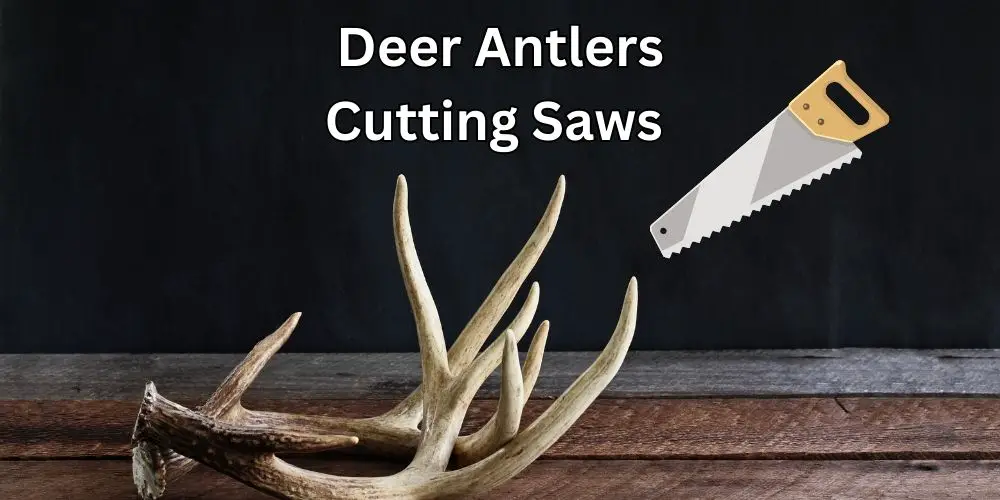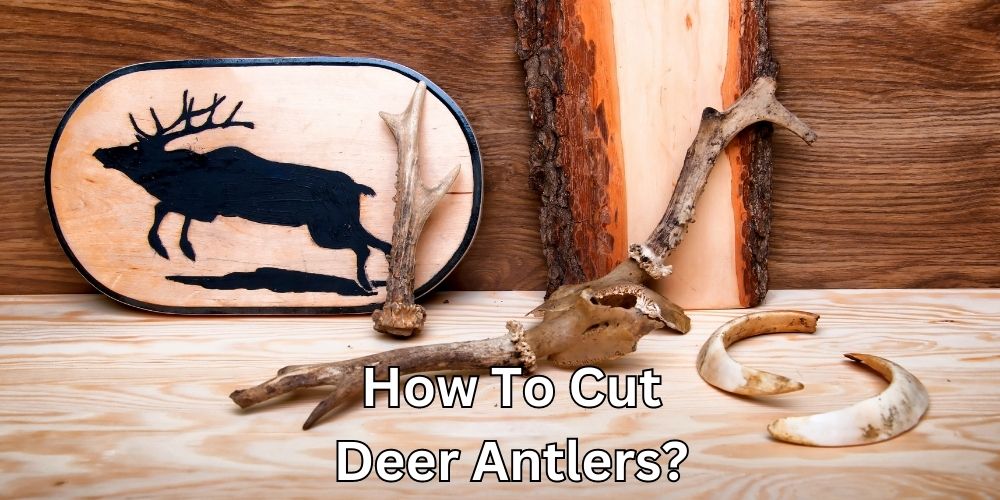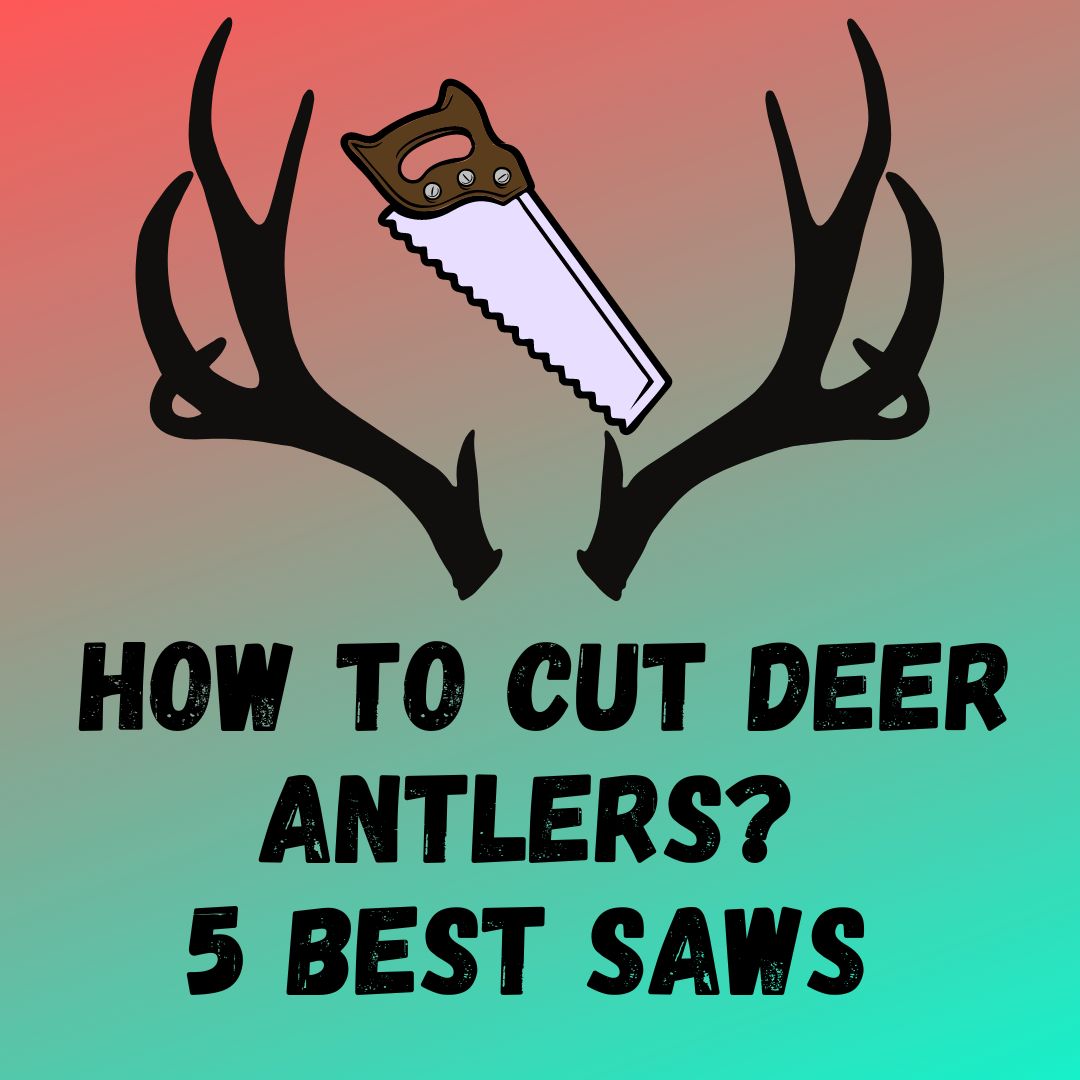Cutting deer antlers is a common practice among hunters and outdoors enthusiasts. Antlers are a prized possession and are often kept as a trophy or used in various decorative and practical applications. Cutting antlers is done for a variety of reasons, including to make them easier to transport, to create a specific look or shape, or to use them for a specific purpose such as knife handles or dog chews. However, cutting antlers requires some knowledge and skill to ensure that they are cut safely and properly without damaging the antlers or compromising their integrity. In this article, we will explore the process of cutting deer antlers, including the tools and techniques needed, as well as tips for achieving the desired outcome
There are a variety of commercial saws available for cutting deer antlers and bones, each with its own pros and cons. Here are six of the most common options:
- Reciprocating saw: A reciprocating saw is a handheld tool that uses a motor to move a blade back and forth rapidly. It is a versatile option that can be used for a variety of cutting tasks, including cutting through deer antlers and bones. Pros: Reciprocating saws are powerful and can quickly cut through dense materials. Cons: They can be heavy and difficult to control, making them less suitable for precision cuts.
- Band saw: A band saw is a stationary saw that uses a blade with teeth to cut through materials. It is commonly used in meat processing plants to cut through animal bones. Pros: Band saws are powerful and can make precise cuts. Cons: They are expensive and require a dedicated workspace.
- Circular saw: A circular saw is a handheld tool that uses a circular blade to cut through materials. It is commonly used in construction and woodworking, but can also be used to cut through antlers and bones. Pros: Circular saws are versatile and relatively affordable. Cons: They can be difficult to control and require the use of a specific type of blade for cutting bones.
- Jigsaw: A jigsaw is a handheld saw that uses a reciprocating blade to cut through materials. It is commonly used in woodworking, but can also be used to cut through antlers and bones. Pros: Jigsaws are versatile and relatively affordable. Cons: They can be difficult to control and may not be as powerful as other saws.
- Hacksaw: A hacksaw is a handheld saw that uses a fine-toothed blade to cut through materials. It is commonly used in plumbing and metalworking, but can also be used to cut through small bones and antlers. Pros: Hacksaws are affordable and easy to control. Cons: They may not be powerful enough for larger antlers or bones.
- Angle grinder: An angle grinder is a handheld tool that uses a rotating disc to cut through materials. It is commonly used in metalworking, but can also be used to cut through antlers and bones. Pros: Angle grinders are powerful and can make precise cuts. Cons: They can be difficult to control and require the use of a specific type of blade for cutting bones.
Keep in mind that cutting antlers can be a challenging task, and it’s important to use the proper safety equipment and take appropriate precautions to avoid injury. Always wear eye and ear protection, and use a firm grip on the saw to maintain control while cutting.

6 Commercial Saws For Cutting Deer Antlers and Bones
Your list includes some great saw options for cutting deer antlers. Here are some more details about each saw:

Gerber Vital Pack Saw: This saw is designed for cutting through bone and comes with a sheath for easy portability. It has a high carbon stainless steel blade and a comfortable grip.
Wicked Tree Gear Utility/Bone Saw: This saw is designed for cutting through bone, but it can also be used for other cutting tasks. It has a curved blade for efficient cutting and a comfortable grip.

LEM Products 640 16″ Meat Saw: This saw is designed for cutting meat, but it can also be used for cutting through bone and antlers. It has a durable stainless steel blade and a comfortable handle.

Gerber Gear Hunting Saw: This saw has a compact design and a stainless steel blade for cutting through bone and other materials. It also features a comfortable grip and a lock-back design for safety.

Satterlee Bone Saw 13″: This saw is specifically designed for cutting through bone and antlers. It has a sharp blade and a comfortable grip for efficient cutting.

HME Products Bone Saw: This saw has a 9-inch blade with serrated teeth for efficient cutting through bone and antlers. It also has a comfortable grip and a durable construction.

When selecting a saw for cutting deer antlers, it’s important to choose one with a sharp blade and comfortable grip that’s specifically designed for cutting through bone. Consider the size and weight of the saw, as well as any additional features such as a sheath or lock-back design for safety.

6 Steps to Cut a Deer Antler
Cutting deer antlers requires some care and attention to avoid damaging the antlers or injuring yourself. Here are the general steps to cut deer antlers:
- Secure the antler: Use a vise or clamp to securely hold the antler in place while cutting. This will help prevent the antler from slipping or moving while you work.
- Plan your cut: Identify the location where you want to make the cut and mark it with a pencil or marker. Take care to avoid cutting too close to the skull or damaging the antler.
- Choose your tool: Depending on the size and thickness of the antler, you may use a handsaw, a reciprocating saw, or a band saw to make the cut. Make sure the saw is sharp and appropriate for the job.
- Make the cut: Using your chosen tool, carefully make the cut along the marked line. Take your time and use slow, steady movements to avoid damaging the antler or causing the saw to bind.
- Sand and smooth the cut: Once the cut is complete, use sandpaper or a file to smooth any rough edges and create a clean, even finish.
- Protect the cut: To protect the cut and prevent damage or decay, consider applying a sealant or wax to the cut surface.
Remember to always wear appropriate safety gear, such as eye and ear protection, when cutting deer antlers. Take your time and work carefully to avoid accidents and damage to the antlers.
What Kind Of Saw and Tools To Cut Antlers?
There are several types of saws that can be used to cut antlers, depending on the size and thickness of the antler and the desired cut. Here are some options:
- Hand saw: A hand saw, such as a coping saw or a small hacksaw, can be a good option for cutting smaller antlers or making precise cuts. Look for a saw with a sharp blade and a comfortable grip.
- Reciprocating saw: A reciprocating saw, also known as a “sawzall,” can be a good choice for cutting larger antlers or for more heavy-duty cutting tasks. Look for a saw with a variable speed trigger and a comfortable grip.
- Band saw: A band saw can be a good option for cutting multiple antlers quickly and efficiently. Look for a saw with a variable speed control and a sturdy table.
- Dremel tool: A Dremel rotary tool with a cutting wheel can be a good option for making precise cuts or carving intricate designs into antlers.
Make sure to choose a saw with the appropriate blade for cutting antlers, such as a fine-toothed blade that can make precise cuts without damaging the antler. Additionally, be sure to follow the manufacturer’s instructions and safety guidelines, and wear appropriate safety gear, such as eye and ear protection, to avoid injury.
How to Remove Antlers From The Skull?
Here are the steps to remove antlers from a skull:
- Clean the skull: Before removing the antlers, the skull should be thoroughly cleaned to remove any flesh, tissue, or other debris. This can be done by boiling the skull or using a maceration process to break down the tissue.
- Locate the joint: The antlers are attached to the skull at a joint called the pedicle. This joint is located near the base of the antlers and can be identified by its rough, bumpy texture.
- Cut through the pedicle: Using a saw or other cutting tool, carefully cut through the pedicle to separate the antlers from the skull. Make sure to cut cleanly through the joint without damaging the antlers or the skull.
- Remove any remaining tissue: After the antlers are removed, there may be some remaining tissue or cartilage attached to the base of the antlers. This can be carefully removed using a sharp knife or other cutting tool.
- Clean and preserve the antlers: Once the antlers are removed from the skull, they should be cleaned and preserved to prevent decay or damage. This can be done by washing the antlers with soap and water, and then coating them with a protective sealant or preservative.
Keep in mind that removing antlers from a skull can be a challenging and potentially dangerous task, and it’s important to use the proper safety equipment and take appropriate precautions to avoid injury. Always wear eye and ear protection, and use a firm grip on the saw or other cutting tool to maintain control while cutting.
Reference links
Sure! Here are some links to the saws mentioned:
- Gerber Vital Pack Saw: https://www.gerbergear.com/en-us/shop/cutting-tools/all-cutting-tools/vital-pack-saw-31-002741
- HME Products Bone Saw: https://www.hmeproducts.com/bone-saw-with-scabbard/

94% of pet owners say their animal pal makes them smile more than once a day. In 2007, I realized that I was made for saving Animals. My father is a Vet, and I think every pet deserves one. I started this blog, “InPetCare”, in 2019 with my father to enlighten a wider audience.

